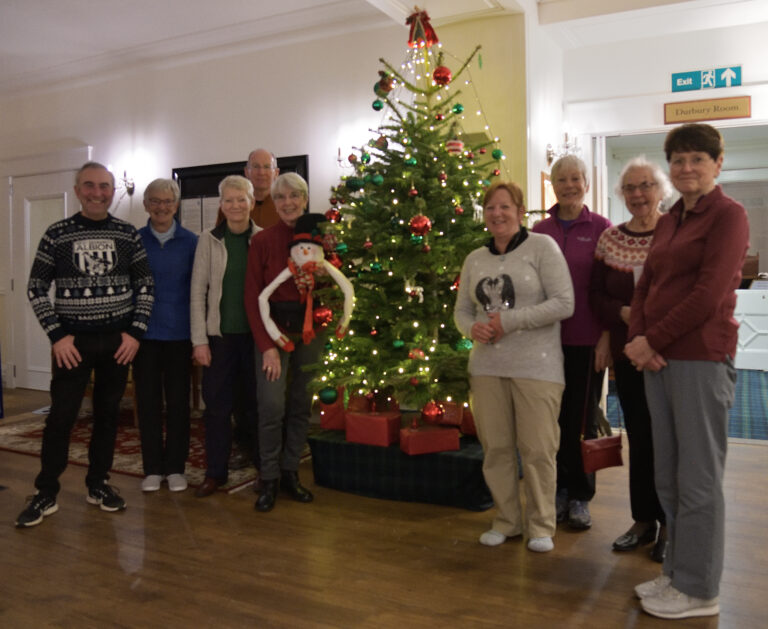
It’s a crisp -2°C first thing this morning outside the hotel as we head out of town through a winter wonderland forest of ‘Christmas trees’ lightly sprinkled with fresh snow from the previous night, en route to a nearby Black Grouse lek. Delayed by frozen doors, we arrive at the lek around 8.50am, just in time to see a tight flock of eight Blackcocks fly past as they disperse across the moorland to find food amid the frozen landscape. Not a bad start to the trip.
From here, we head north to Burghead harbour on the Moray coast, where we enjoy great views of a couple of drake Long-tailed Ducks, close enough to see their knitting needle tails and pink bills! We also spot Eiders offshore and Turnstones amid the fishing nets along the harbour wall.
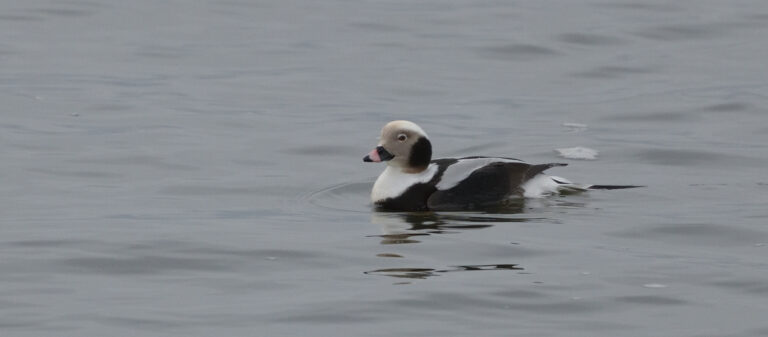
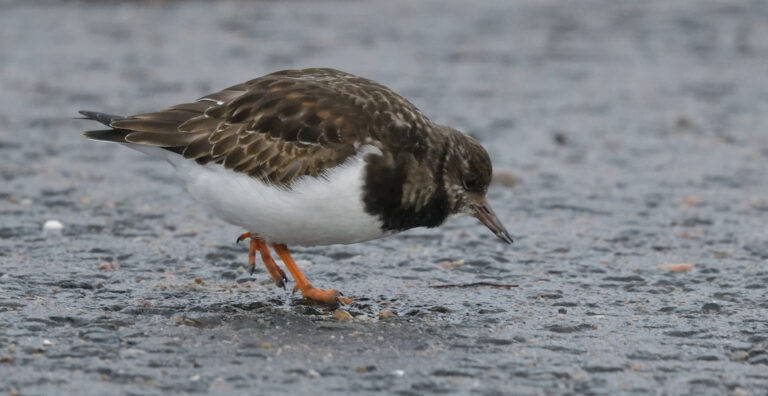
Moving on to nearby Hopeman harbour, the seaweed-covered beach is alive with Turnstones, plus Purple Sandpipers, two or three Rock Pipits, a Redshank and a Ringed Plover, while a smart male Stonechat poses on the harbour wall just a few feet away from us. Meanwhile, another Long-tailed Duck pops up in the harbour with several more diving offshore.
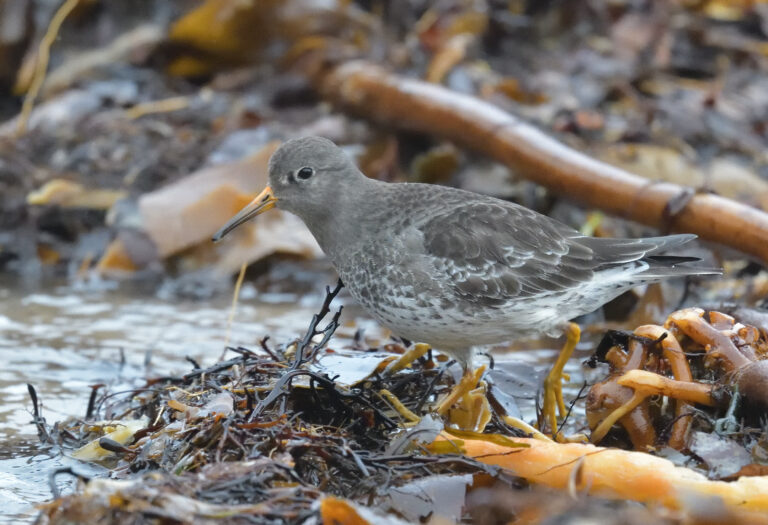
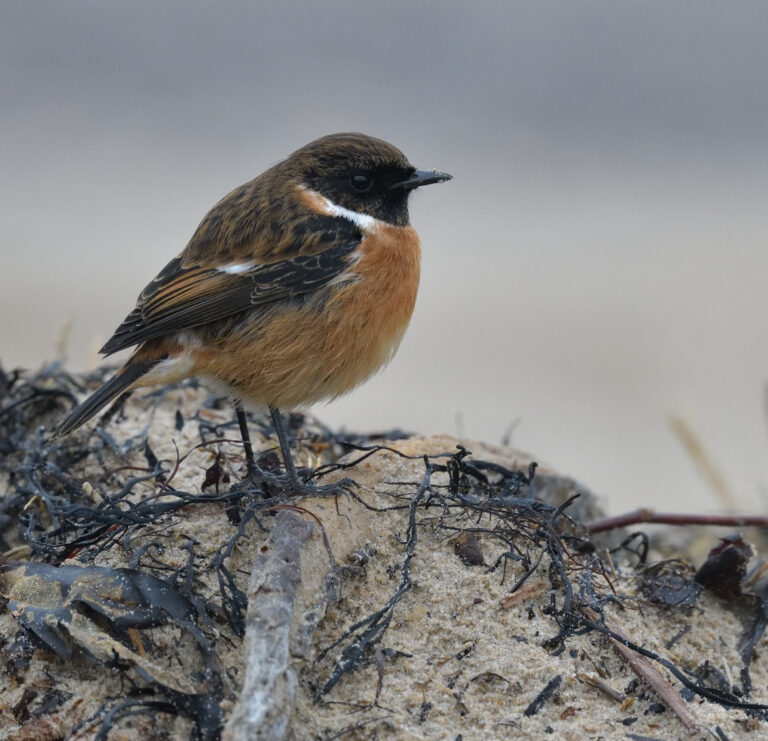
Continuing further east to Lossiemouth West Beach, a brief seawatch produces plenty more Long-tailed Ducks, a few more Eiders and a couple of female Common Scoters, as well as a mixed roost of Oystercatchers, Sanderlings and a Bar-tailed Godwit on a rocky point. After lunch here, watching the breakers rolling in and Fieldfares flying around inland, we head to the Lossie estuary hoping to find the drake American Wigeon spotted here yesterday. During a scan through thousands of Wigeon along the far shore of the estuary, we also find Teal, Oystercatcher, Bar-tailed Godwit, Curlew, Dunlin, Redshank, and eventually the American Wigeon, the ‘needle’ in a ‘haystack’ of Eurasian Wigeon, just as the light begins to fade around 2.30pm!
This morning we set off a good half hour before sunrise at 8.52am, hoping to see some ground-based action at the nearby Black Grouse lek, where we arrive at 8.35, shortly after the first pink light illuminates the clear sky revealing just three males today, standing around as if waiting for the rest of the party to arrive. During the next half hour, no other birds turn up, so we make do with an occasional puffed up, fanned out display by two of the trio, while the other looks on.
Moving on via a frosty scenic drive alongside Lochindorb, we find numerous Goldeneye on the calm loch surface and then a high flying hen Hen Harrier circles over the moorland before drifting off to the east. Next, we head up the Strathdearn valley amid a spectacular landscape peppered with a light dusting of fresh snow. Despite the ideal flying conditions, we only spot a few Buzzards, a couple of Kestrels and Ravens and two paragliders. High on the slopes we find a herd of over a hundred Red Deer and lower down we scope a pearly white Mountain Hare hunkered down and keeping a low profile amid small patches of snow. With news of Waxwings in nearby Nethy Bridge, we make a bee line for the ‘village in the forest’ and after a tour of the front gardens we home in on three of these exotic looking birds perched in a bare tree shortly before sunset at 3.42pm! For most of the group, this was appropriately their last new bird of 2023.
As it’s Hogmanay this evening, we enjoy a gala dinner in the hotel, where the local custom is to be led into the dining room by a piper, who then recites an ode to the haggis, which is virtually incomprehensible to us Sassenachs! Part way through the ode, he violently stabs the poor haggis! After the delicious dinner, we join a street party on The Square immediately outside the hotel, where the ‘real men’, wearing kilts, join in various traditional dances accompanied by a Ceilidh band and plenty of mulled wine, local ales and whisky. Just before midnight, the countdown begins to an almighty firework display which almost drowns out the piper playing throughout the display, which lasts for a full six minutes! After twelve, the dancing continues. No wonder Scots need two consecutive bank holidays to get over all this revelry.
This morning we have a well earned lie in until breakfast at 8am. As it’s a new year, we return to the local Black Grouse lek, where five cocks at 9.05am are first bird on the new year list, so that’s not a bad start at all! From here we head north to the Loch Spynie RSPB reserve, where we enjoy close views of a couple of Red Squirrels at the feeding station, busy with Chaffinches and Coal Tits. Meanwhile, we have a very productive spell in the hide looking out onto the small loch, finding a good range of wildfowl including several Goldeneye, plus a Pink-footed Goose and drake Pintail, Goosander, Smew and even a vagrant Green-winged Teal from North America! Leaving the reserve, we also spot Reed Buntings and Yellowhammers in the hedgerows. By now the bank holiday weather is perfect with a bright blue sky and calm conditions, ideal for a picnic beside the Lossie estuary, where the lovely light gives great views of all the many Teal and Wigeon, as well as a drake Long-tailed Duck, two drake Red-breasted Mergansers and a couple of Little Grebes, with numerous Turnstone, Sanderling, Dunlin, Bar-tailed Godwit, Curlew, Redshank and Oystercatchers along the shore.
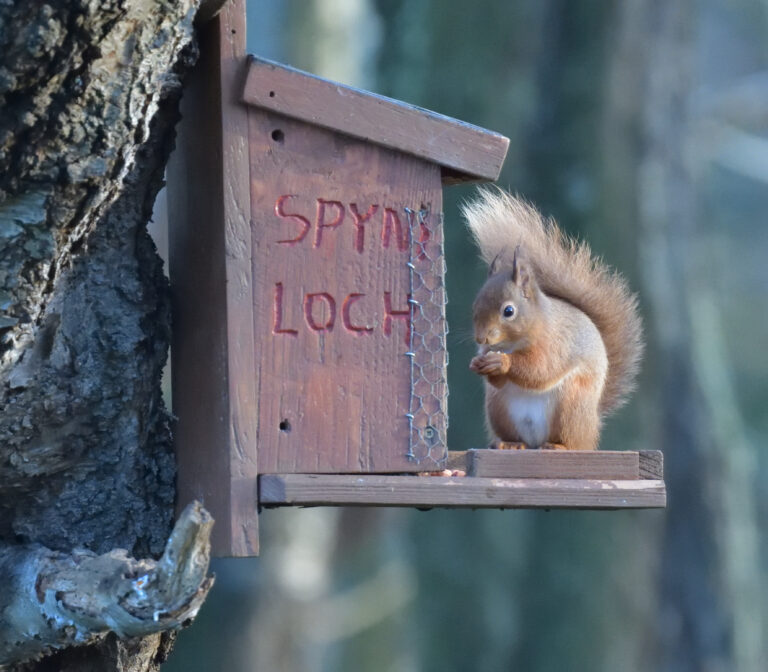

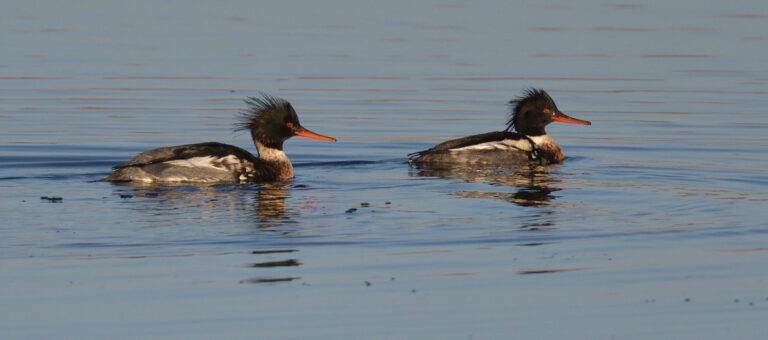
Heading west, our last port of call today is at Roseisle, where we find a pair of Whooper Swans grazing amongst a flock of sheep. Scanning offshore, we also find several Velvet Scoters and Slavonian Grebes, plus a Great Northern Diver, adding even more quality to our 2024 list, and it’s only January 1st!
After breakfast at 7am today, we drive north to Chanonry Point hoping to see the famous Bottle-nosed Dolphins on the rising tide. On arrival the weather is far from inviting, with a cold breeze and drizzle, and clearly too wet for the dolphins! Meanwhile, there are plenty more Long-tailed Ducks here as well as Red-throated Divers and a Great Northern Diver, plus Red-breasted Mergansers, Common and Grey Seals and a raft of about 800 Eiders!
In view of the poor weather, we return to the hotel for lunch, and then set off in the direction of Tomintoul, by which time the rain has stopped. Along the scenic winding road to Tomintoul, we spot the only Red Kite of the trip and then turn onto an icy minor road in search of our target Great Grey Shrike, first reported here on Boxing Day. On arrival at the site there is no sign of the bird, but after a patient wait, there it is posing at the top of a Birch tree. For several minutes we scope this scarce winter visitor perched in several small Birches, exactly where the sightings map said it should be!
This morning we begin at the Cairngorm ski resort car park, hoping to find two scarce specialities of the Scottish Highlands, Snow Bunting and Ptarmigan. Scanning snow-covered slopes for this all white bird is never easy, and we fail to find a Ptarmigan which is one of the world’s best camouflaged birds, though we do find a couple of motionless Mountain Hares, looking like lumps of snow. After fleeting glimpses of Snow Buntings in flight high above the slopes, back on the car park, we find a flock of about twenty foraging on the snow and giving excellent views.
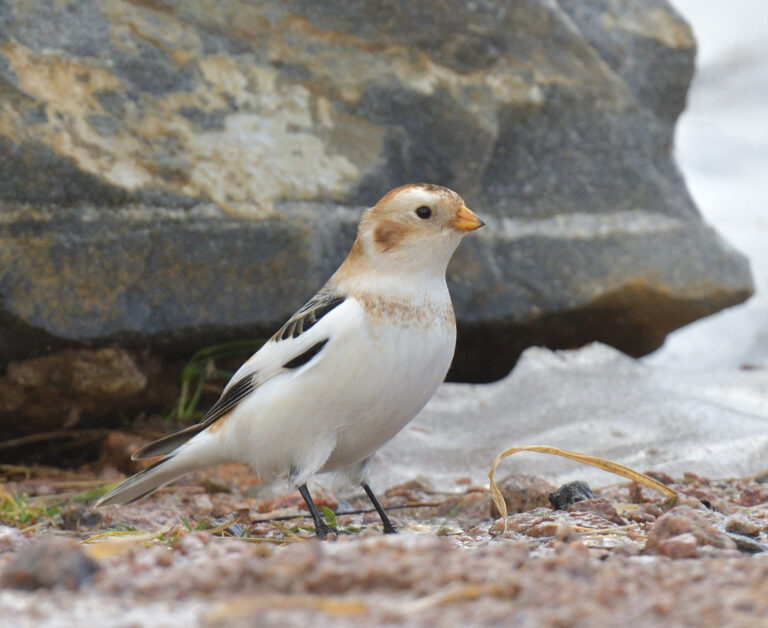
Heading downhill into Glen More Forest, a brief stop at a bridge over the River Luineag which drains Loch Morlich produces the only Dipper of the trip.
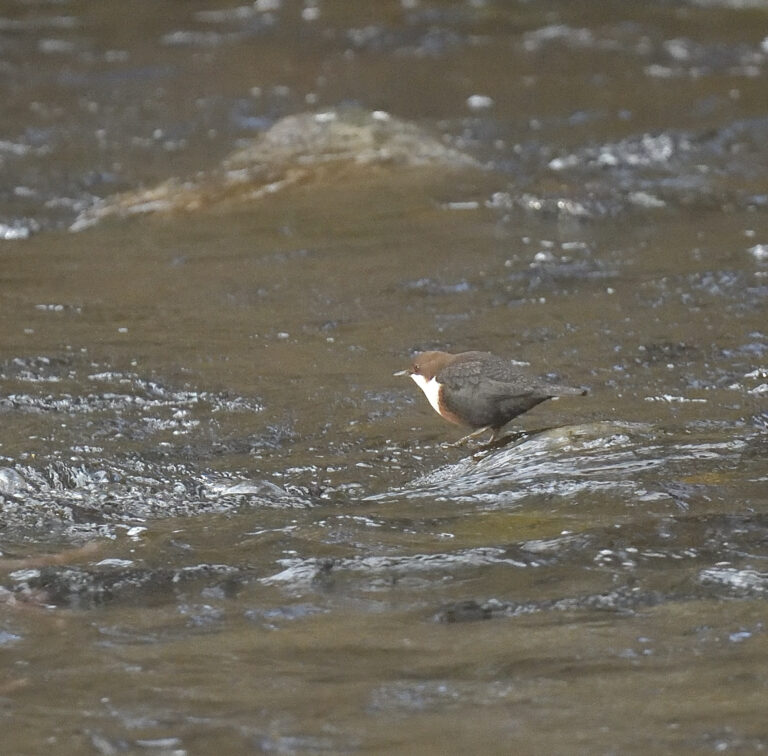
Moving on to the RSPB Loch Garten reserve, Lesser Redpolls are ‘car park’ birds here, while the adjacent forest is alive with more Coal Tits than I ever remember seeing anywhere else. Some are even bold enough to feed from the hand, showing just how light these tiny birds are. Back on the car park we at last find a Crested Tit.
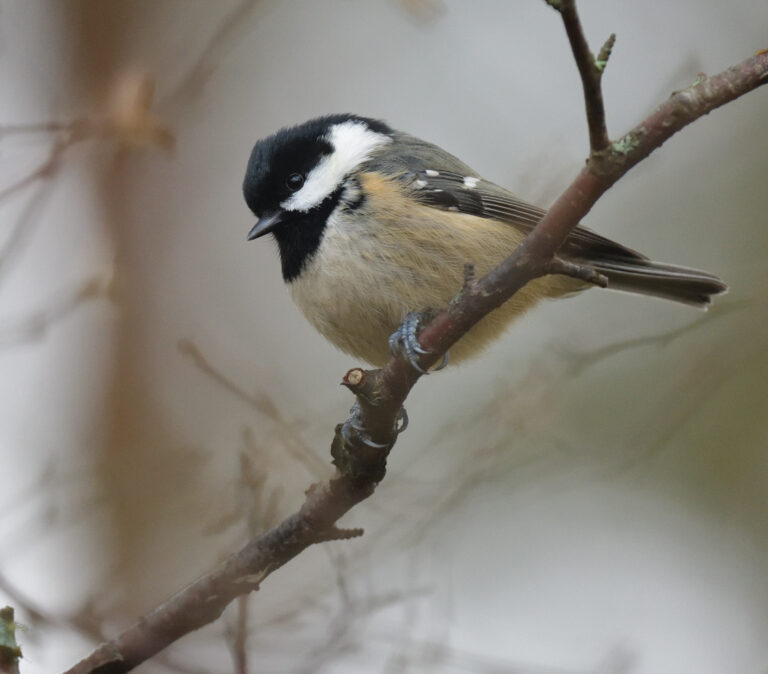
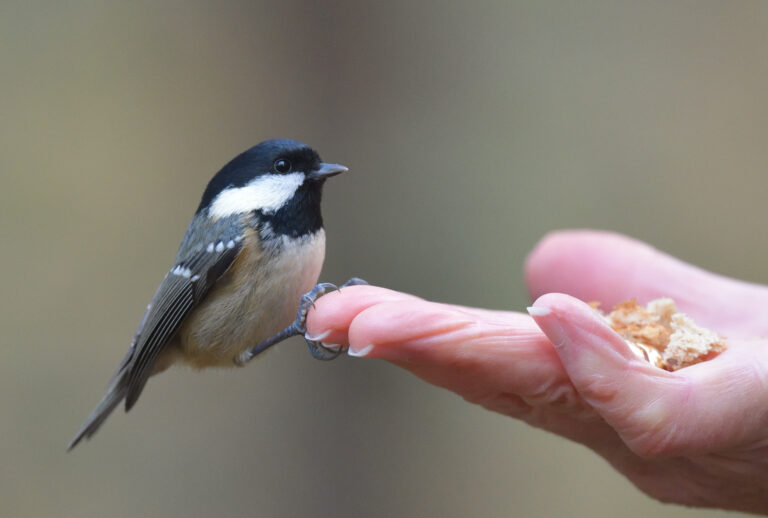
After an early dinner in the hotel bar, we set off in the dark on a short drive south into the forest to visit a hide, hoping to see Badgers and Pine Martens. After three hours the usual Mustelids have still not turned up, but we did see something far more unusual, an exceedingly rare and elusive Scottish Wildcat, briefly standing a few feet away and showing its distinctive thick black-ringed tail with a black tip. Wow, how lucky was that!
It’s our last day and we spend a bright morning in the lovely Anagach Woods, within walking distance of the hotel. In the still air, frozen rain drops hanging from Birch twigs and Scots Pine needles bejewel the trees and sparkle like diamonds in the shafts of sunlight filtering through the atmospheric forest. Exploring the trails, these beautiful Caledonian pinewoods are strangely quiet apart from the usual Coal Tits, two pairs of Bullfinches and a couple of lively Red Squirrels.
By now we had enjoyed the Hogmanay celebrations in a lovely hotel, and seen Red Squirrels, Mountain Hares and a Scottish Wildcat as well as 82 different birds including rarities like Red-throated and Great Northern Divers, Slavonian Grebe, Long-tailed Duck, Smew, Velvet Scoter, Green-winged Teal, American Wigeon, Black Grouse, Hen Harrier, Great Grey Shrike, Waxwing, Crested Tit and Snow Bunting, and all amid wonderful scenery with a lovely group.
